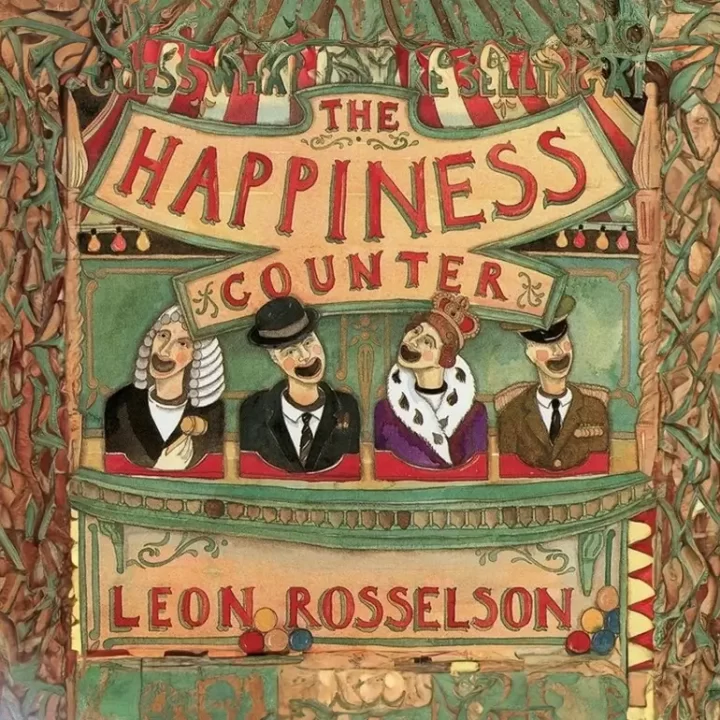Today's Monday • 8 mins read
— By Dr. Sandip Roy.
We all need happiness.
But why will happiness matter more as a brand in this decade?
How the market growth in the coming years will find deep roots in happiness?
As it is, many CEOs and managers already see happiness as a KPI (Key Performance Indicator).
And we’re increasingly seeing that anything that makes its way out of the factory gets a bit of happiness attached to it.
Brand Happiness
Happiness is near risking its way to getting clichéd.
And we’re talking about “Happiness” — The Brand.
“Happiness” has become the byword in marketing today. Its presence in the market is ubiquitous.
Today, it is an essential branding accessory that a horde of marketing heads are using increasingly to promote their services and products.
- Read to find out why happiness is important for us.

Advertisements associating their brands with Happiness that I crossed paths with in the last few years range from realty, cars, apparel, holidays, manufacturing hubs, sodas, gifting solutions, office cultures, college campuses, spa services, mall experiences. And even stationery (happy pencils, anyone?).
You open a newspaper or a magazine, or go to a social network or a high-value content-curated site – you can be sure to find a publicity communiqué using the word Happiness. You’ll spot ‘Open Happiness’, ‘Delivering Happiness’, ‘Chain of Happiness’, ‘Gifting Happiness’, ‘Land of Happiness’, ‘Happiness Calling’, and ‘The Happiest Place On Earth’, to mention a few.
Forbes has a list of the Happiest Brands. Forbes called them ‘feel-good brands that pluck all the right heartstrings.’ Apple often makes it to the top. The UK has its Isobel Index of Happiest Brands.
And the surprising thing is that “Happiness” took close to no time to become this big a global branding phenomenon. Go back 5 years, and you find it wasn’t this phenomenal.
So, how did “Happiness” acquire this viral popularity in our collective consciousness the world over, in a journey of less than a decade?

History of Happiness As A Science
It began at the University of Pennsylvania. In 1998, Martin Seligman became the President of the American Psychological Association.
He signaled a breakthrough movement by borrowing a phrase from Abraham Maslow – Positive Psychology.
Those two words soon burst upon humanity as “The Science of Happiness.” Spearheading the movement were some of the best-known psychologists from the US and Europe.
His premise was this: Psychology throughout most of its existence has been a science that was based on the disease model. Traditionally speaking, it was all about studying what was wrong with people. Seligman proposed it was time to move the fulcrum and balance the negative weight of this human science with the positive.
In a later day address at the 1999 Lincoln Summit, he said, “The most important thing, the most general thing I learned, was that psychology was half-baked, literally half-baked. We had baked the part about mental illness… The other side’s unbaked, the side of strength, the side of what we’re good at.”
Essentially, he declared that psychologists now needed to refocus and begin an era of studying human strengths and happiness.
He was supported by Ed Diener (who coined the term subjective well-being), Mihaly Csikszentmihalyi (who gave us the concept of flow), Barbara Fredrickson, Christopher Peterson, Robert Emmons, Michael McCullough, Kennon Sheldon, and Sonja Lyubomirsky.
The year 1999 saw three remarkable events happen in this newfound discipline:
- The first Positive Psychology Conference is held in Akumal, Mexico.
- The first annual Positive Psychology Summit is held in Lincoln, Neb.
- The first University Programs in Positive Psychology becomes available at Harvard and the University of Pennsylvania.
And in 2005, Time published its cover story, The New Science of Happiness. Next year, in 2006, Tal Ben-Shahar’s course on the subject, popularly referred to as Happiness 101, became the most popular course at Harvard ever, with its enrollment of 854 students, surpassing even introductory economics.
The media had found its new poster boy – “Happiness.”

Brand Happiness Goes To Market
From that point on, the marketers started infiltrating the ranks. They listened intently to the researchers speak, took notes, and read journal papers at night. Once they started to understand this, they began to spend their time, effort, and money to formulate their market testing campaigns. And the results were encouraging. The Happiness Brand was getting unforeseen amounts of market traction.
This rhetoric on happiness arrived as a gigantic opportunity for brands, according to Ann Mack, director of trendspotting at JWT. She said, “People are thinking of happiness in a more prescriptive way.”
But wasn’t it getting exploitative?
A definitive ‘No’ was their answer.
They reasoned that instead of feeding the fears and exploiting the weaknesses of the consumers, brands that design ways to make the customers happy, would have an ethical and moral advantage.
Consumer happiness was a better proposition than customer satisfaction, any way you saw it.
You might as well just imagine them saying, “You know that old saying that money can’t buy happiness? Now, even science proves that. So what we are offering here is something your money cannot buy – happiness!
You’re just paying for the product; the happiness that you cannot buy comes for free.
We’re giving it because, after all, the pursuit of happiness is a fundamental right; we are just facilitating that.”
At this point, we were reminded of the incredible Don Mad Men Draper quote,
Advertisement is based on one thing – happiness.
And thus the brand name of the product or service was pushed into the background. While the happiness brand picked up the plum role of the central protagonist in marketing campaigns.
It worked on the premise that Positive Psychology proved that purchasing experiences gave much more lasting happiness than purchasing material objects. This immediately worked out well for ‘experiential services’ such as holidays, spas, and the like. It was the products – the material things – that needed to be redefined in the advertisement stories.
Soon enough, the goods industry too made an effortless, almost imperceptible transition into selling happy experiences rather than the value of the products. Happiness, the brand, was everywhere.
An expensive watch wasn’t now being sold for keeping time accurately for 100 years; instead, it was now a piece of heirloom embodying the happiness of a generation that a father would pass on to his son on his day of engagement.
Selling The Brand Happiness

Is this ubiquitous trend of packing in happiness as a part of the sale the right thing to do?
After all, happiness is a basic human emotion, so why commercialize it?
The experts voiced the right reasons again.
Jennifer Aaker, General Atlantic Professor of Marketing at Stanford Graduate School of Business, also a social psychologist, suggests the marketing of happiness can carry an appeal to people that feels like The Dragonfly Effect.
She says,
The idea of brands enabling happiness and providing greater meaning in the world is powerful. People have an aversion to anything that feels overly manufactured.
Another expert opinion in support of this shift to selling happiness came from Scott Reid, executive creative director at The Mars Agency.
In a Hub white paper named Happiness Reflected, Scott Reid made it clear:
Value is perhaps the most sought-after thing in marketing, and it leads to happiness; happiness is the greatest of all motivators, and experiences are entirely about moments that make us happy. …That’s the point. In thinking about the experience, regardless of the value created, what matters is how someone feels, and not what a brand stands for. That is to say, what the brand stands for is only part of the equation. And what’s more, with all three kinds of value (tangible, intangible, and aspirational), one thing is common; they all result in happiness.
In November 2014, Trevor Clawson — a UK business journalist — wrote an article in Forbes covering a three-day summit held in London called Hacking Happiness, Building A Happiness Brand in London’s Tech City, in which he quoted entrepreneur Sebastian Nienaber, “Our approach is to build our brand first – and we’re doing that through the summit. And once we’ve built the brand we will go to develop the products.”
Nicola Kemp of Marketing Magazine says, “It is high time marketers recognized that the pursuit of happiness, far from being a distraction, is key to building sustainable brands and enduring, fulfilling careers.”
Shawn Achor, a positive psychology expert, and chief executive of GoodThink Inc, has a grander agenda – that of infusing the workplace with happiness to raise productivity. He points out that we have reached a tipping point in relation to the nature of work.
“We can no longer increase hours and workload and expect to see higher returns. In fact, we are finding that those people forced to work the longest without feeling happy at work are getting the least done,” he says, explaining the need of introducing happiness into the workplace and the industry.
Final Words
So, as of today, you can’t keep the market out of happiness. And you can’t either keep happiness out of the market.
These happy wheels are spinning fast, and you can’t keep them from rolling all the way up to the glorious mountain top.
That’s the only way the happiness brand is going to go now.
√ Also Read: Can Money Buy Happiness: What Psychology Says On Happy Money?
√ Please spread the word if you found this helpful.
• Our Story!